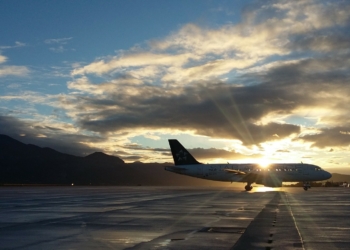These are the world’s most awe-inspiring airports. They serve not merely as transit points for travelers heading to or from various destinations, but also as the first and last impressions of a journey. This is why numerous cities strive to make them as unforgettable as possible. Let’s take a moment to appreciate nine such airports, each of which could be considered an additional tourist attraction in their respective countries.
Santorini: The Island of Energy and Timeless Beauty
Impressive airports that are an experience
Changi Airport, Singapore
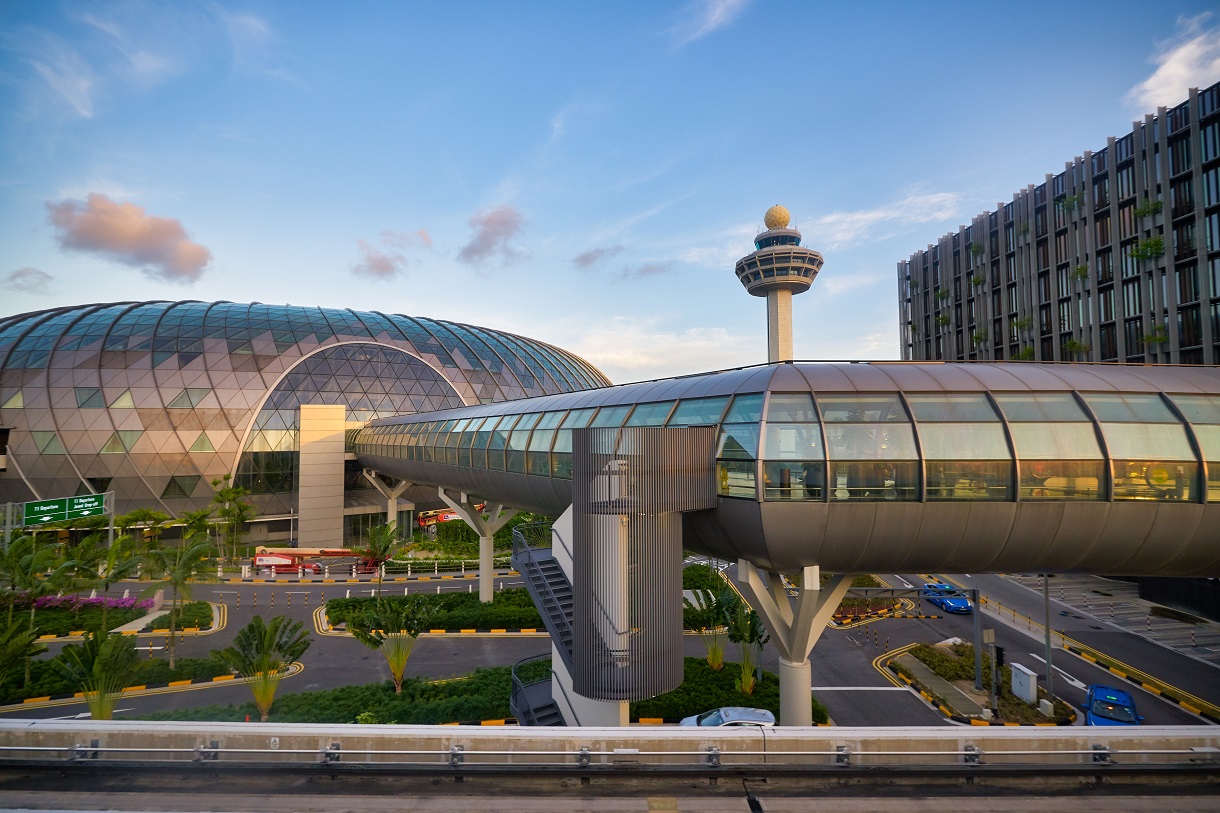
Touching down at Singapore’s Changi Airport is an unparalleled experience. This airport has been repeatedly honored as the best in the world, and its awe-inspiring ambiance is sure to leave a lasting impression on you. Its most distinctive feature is the Jewel, a building worth over a billion dollars. Constructed primarily of glass, this ten-story edifice houses a verdant indoor forest. The sound of a cascading fountain that spans seven stories fills the air, making it the tallest indoor waterfall globally.
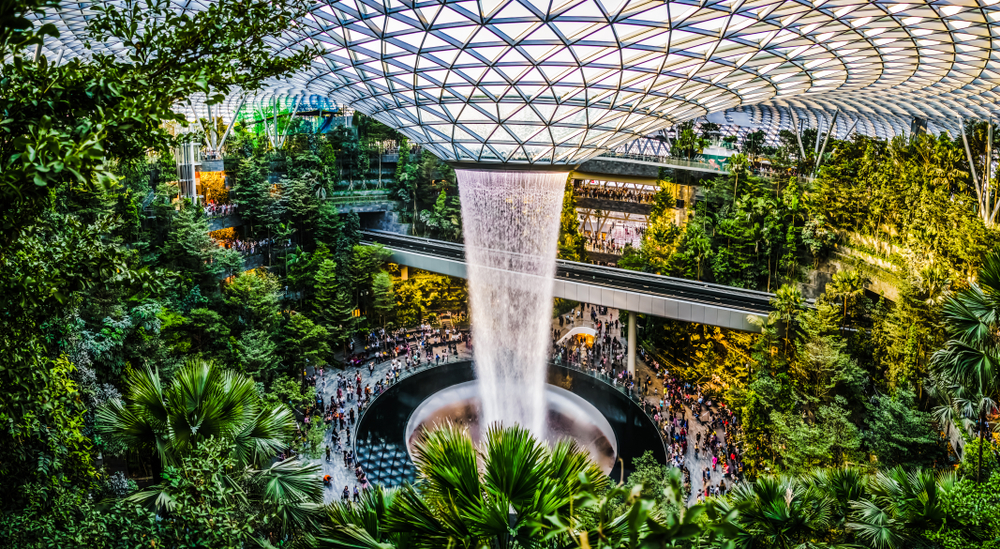
The Jewel is more than just a visual spectacle. It’s a hub of entertainment and commerce, housing a 24-hour cinema, nearly 300 retail stores, a variety of dining options, and a fully stocked supermarket. Adding to the excitement is an aerial train that weaves its way through the building, offering breathtaking views that are sure to thrill. For those seeking relaxation, a rooftop swimming pool provides the opportunity to take a leisurely swim while watching planes ascend and descend in the distance.
- Built-in: 1981
- Just so you know: Skytrax has voted Changi Airport 5 times as the best airport worldwide.
Vancouver Intl Airport, Canada
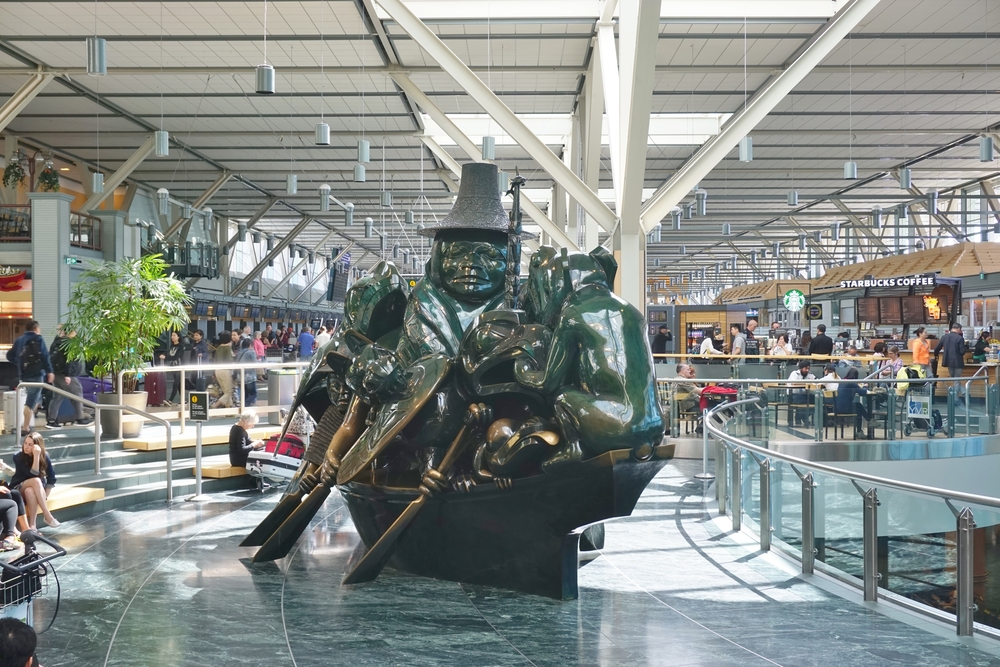
The airport in Vancouver, Canada, is certainly a destination you’ll want to revisit, even if you don’t have another trip planned. The element of water is prominently featured, with the airport boasting the largest aquarium ever constructed in an airport. This impressive aquarium holds over 100,000 liters of water, and even the second smallest one in the area contains no less than two thousand.
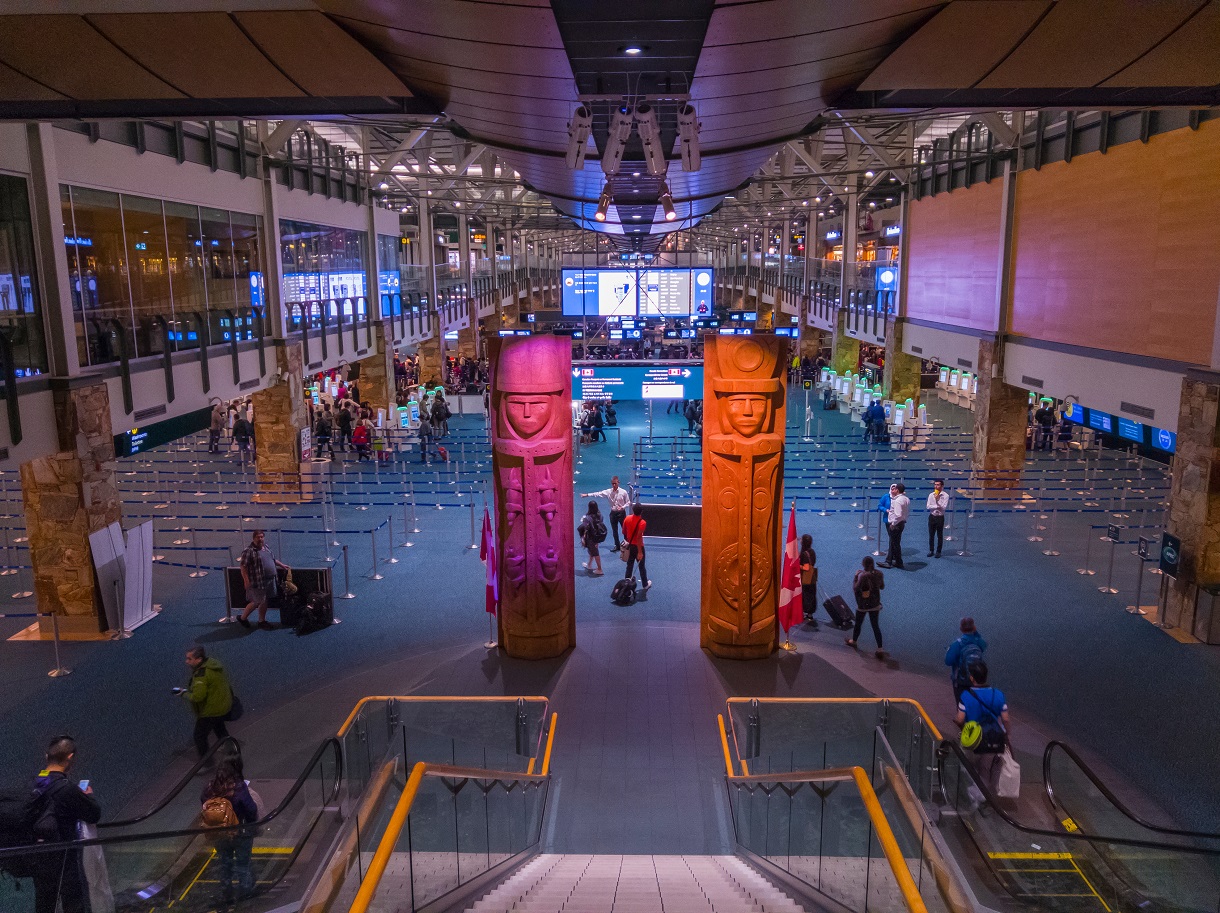
During your visit, you’ll have the chance to encounter a wide variety of marine flora and fauna, with jellyfish making the aquatic structure their home. Beyond the aquatic attractions, travelers can also appreciate the largest collection of sculptures by local artists. A standout piece is a unique sculpture by artist Bill Reed, which depicts a canoe and serves as a central point of interest within the airport.
- Built-in: 1931
- Just so you know: Vancouver Airport due to its location acts as a trans-Pacific hub that helps passengers reach their final destination.
Kuala Lumpur Airport, Malaysia
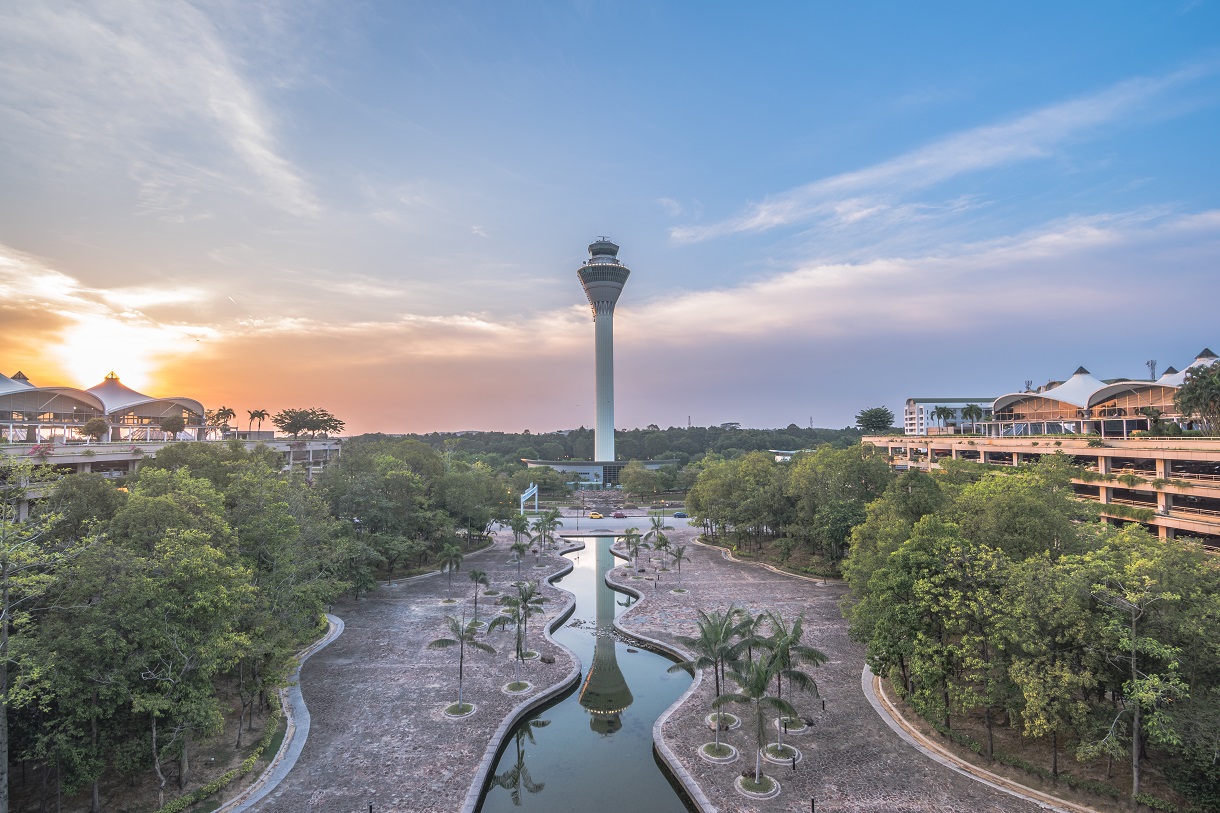
Kuala Lumpur’s airport in Malaysia is another that will leave you awestruck with its breathtaking design. The brainchild of famed Japanese architect Kiro Kurokawa, the airport’s unique architectural elements are sure to mesmerize you. The towering columns supporting its roof draw inspiration from the trees populating Malaysia’s tropical forests, while the lighting mimics the sun’s rays filtering through dense foliage.
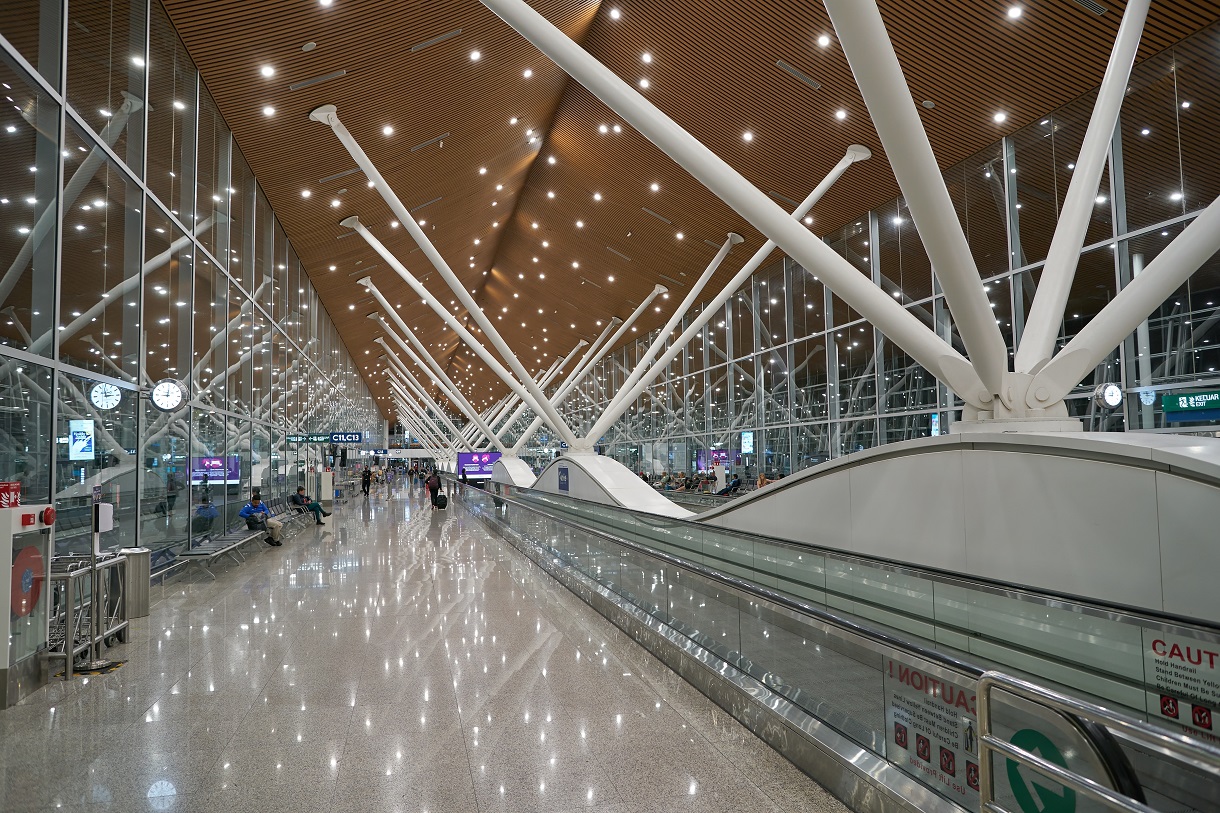
The airport offers a wide array of services, including dedicated prayer rooms, reflecting Malaysia’s status as an Islamic nation. As one of Asia’s largest airports, it provides a unique experience for travelers. You can spend your layover exploring a stunning indoor jungle. This feature is so immersive that you might forget you’re in an airport and not in the heart of a forest, ready for an adventure.
- Built-in: 1998
- Just so you know: Kuala Lumpur Airport is the first with a Green Globe 21 certificate due to the palm forest that surrounds it.
How can a flight arrive on time although it is delayed?
Barajas Airport, Madrid
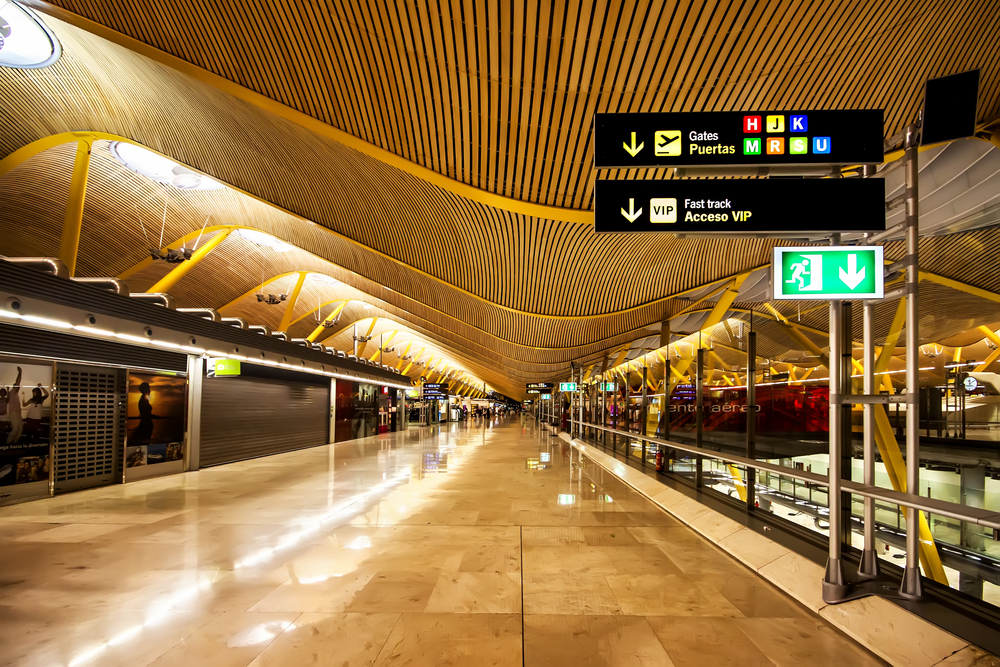
Situated approximately ten kilometers from the heart of Madrid, Spain’s vibrant capital, Barajas Airport is sure to captivate you with its remarkable architecture. As the second largest airport in Europe, it comprises four terminals that radiate a sense of futurism, making it a standout in the aviation landscape.

Terminal 4, located in the northernmost part of the airport, sets Barajas Airport apart artistically. Unveiled in 2005, this terminal is the brainchild of renowned architect Richard Rogers. Rogers employed steel and bamboo in his design, aiming to underscore the airport’s eco-friendly ethos. The terminal is bathed in a warm yellow hue, creating a welcoming atmosphere for travelers. One of its most distinctive features is its unique corrugated roof, which allows natural sunlight to filter through. The supporting columns, reminiscent of actual trees, add an artistic touch to the terminal’s design, further enhancing its appeal.
- Built-in: 1933
- Just so you know: Barajas Airport owes its name to the adjacent district of the same name.
Denver Intl Airport, Colorado
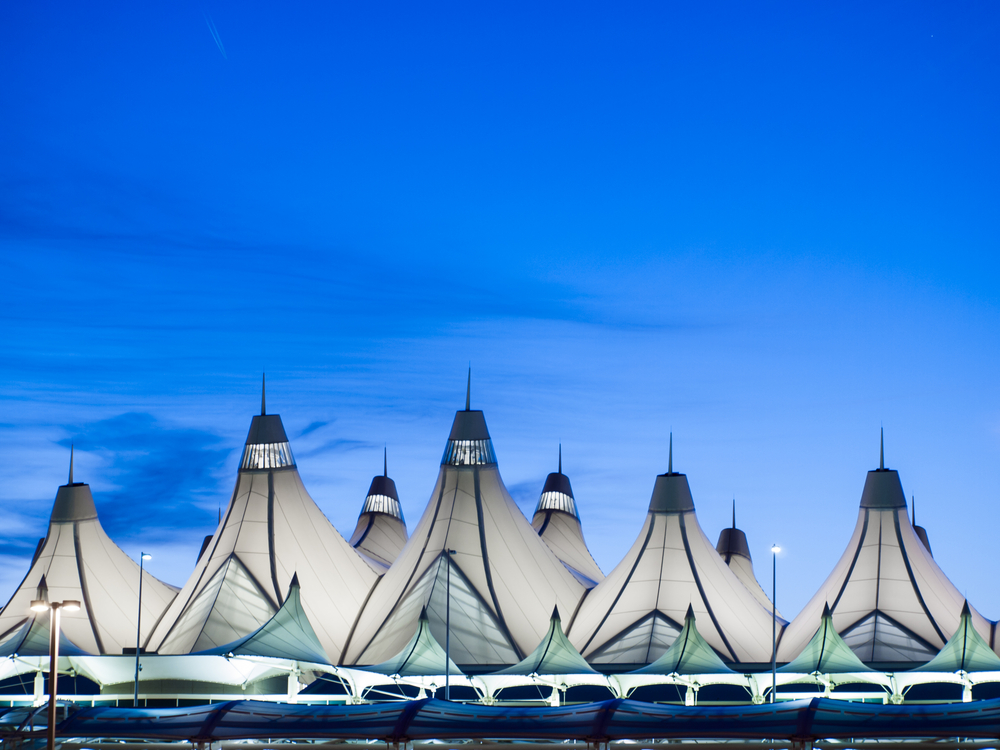
Denver Airport is renowned not just for its architectural prowess, but also for the intriguing conspiracy theories that surround its inception. The entire structure is enveloped in fabric tents, evoking images of Colorado’s mountainous landscape. Spanning approximately 35,000 acres, the airport is adorned with captivating frescoes on its fifth level and a commemorative granite slab. A towering blue horse statue, standing ten meters tall, greets visitors outside the airport, adding to its unique charm.
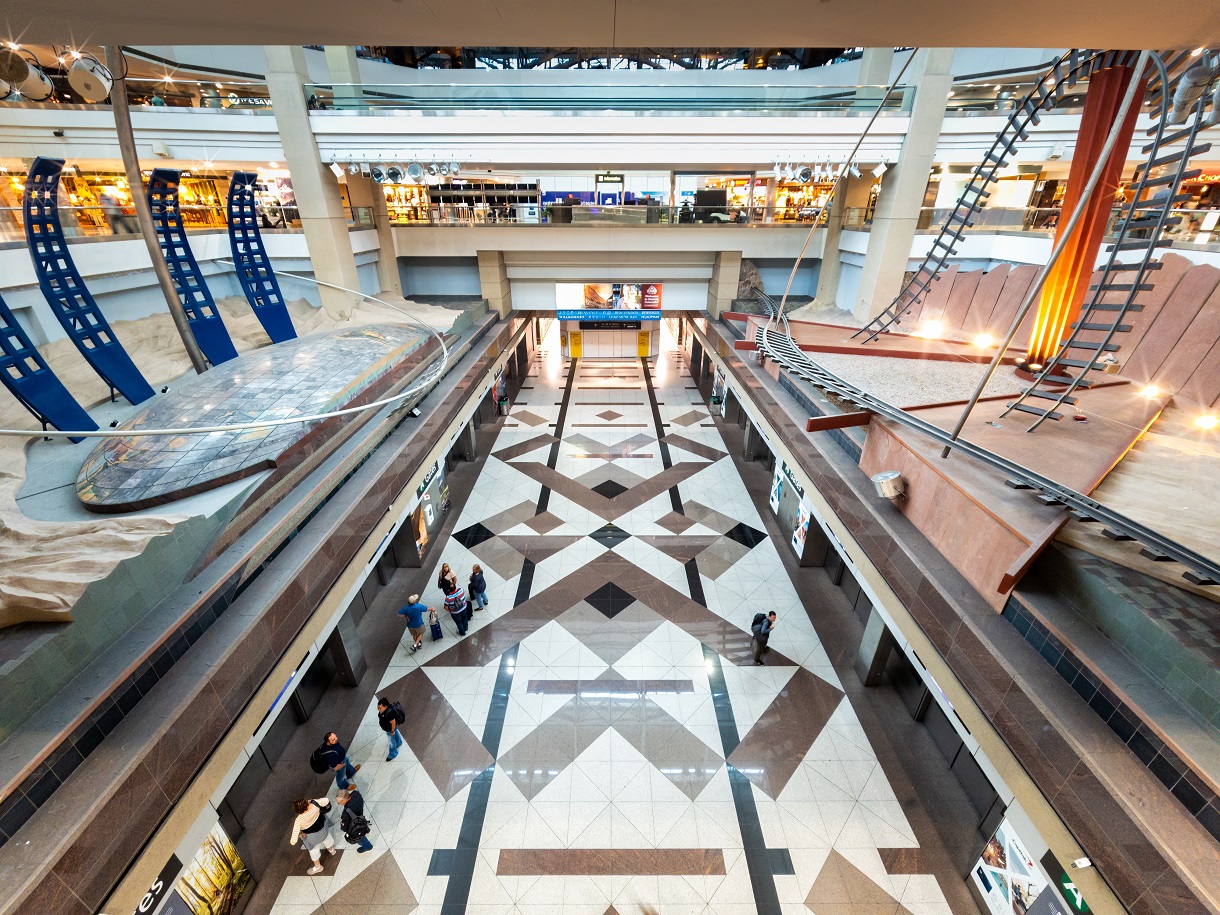
The blue horse statue was intended to symbolize the untamed spirit of the American West. However, it has since been associated with death following the unfortunate demise of its creator. The airport’s delayed completion and unusual spatial layout have fueled various conspiracy theories. Some theorists speculate about the prophetic nature of the frescoes, while others believe that a time capsule hidden within the airport will unveil startling secrets when it’s opened in 2094.
- Built-in: 1995
- Just so you know: The Denver airport is connected to a multitude of conspiracies. One of them wants a network of tunnels underneath it to be used by the ruling class as a refuge during the apocalypse.
Chhatrapati Shivanji Mumbai, India

Chhatrapati Shivaji Airport, situated in the bustling region of Mumbai, is among India’s busiest airports. Its expansive interiors house the largest art exhibit in the entire country, with five thousand works of art gracing its uniquely lit walls. These artworks showcase the diverse artistic heritage of India’s various regions, offering travelers a glimpse into the country’s rich culture.
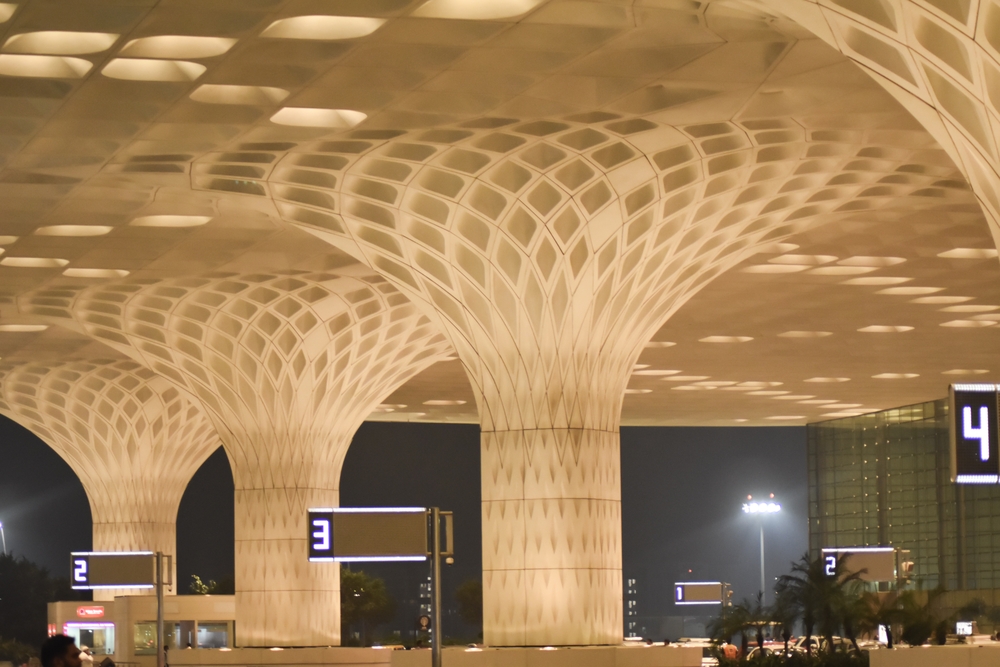
The airport’s architecture is equally impressive. Inside, thirty mushroom-shaped columns uphold its renowned white roof. These columns are designed to resemble peacocks, India’s national bird, symbolizing the country’s traditional ceremonies related to the arrival and departure of visitors. This thoughtful design element adds a touch of local flavor to the airport, making it a memorable part of any journey.
- Built-in: 1940
- Just so you know: Mumbai Airport is named after Shivaji, a 17th-century emperor of India.
Why airplane window shutters should be lifted during take-off and landing
Wellington Intl Airport, New Zealand

Wellington Airport, located in New Zealand’s capital, offers every traveler a cinematic experience. The architect behind its construction, Nick Barrat Boyes, was given a clear directive to design a space with distinct theatrical influences, a goal he achieved to an impressive degree.
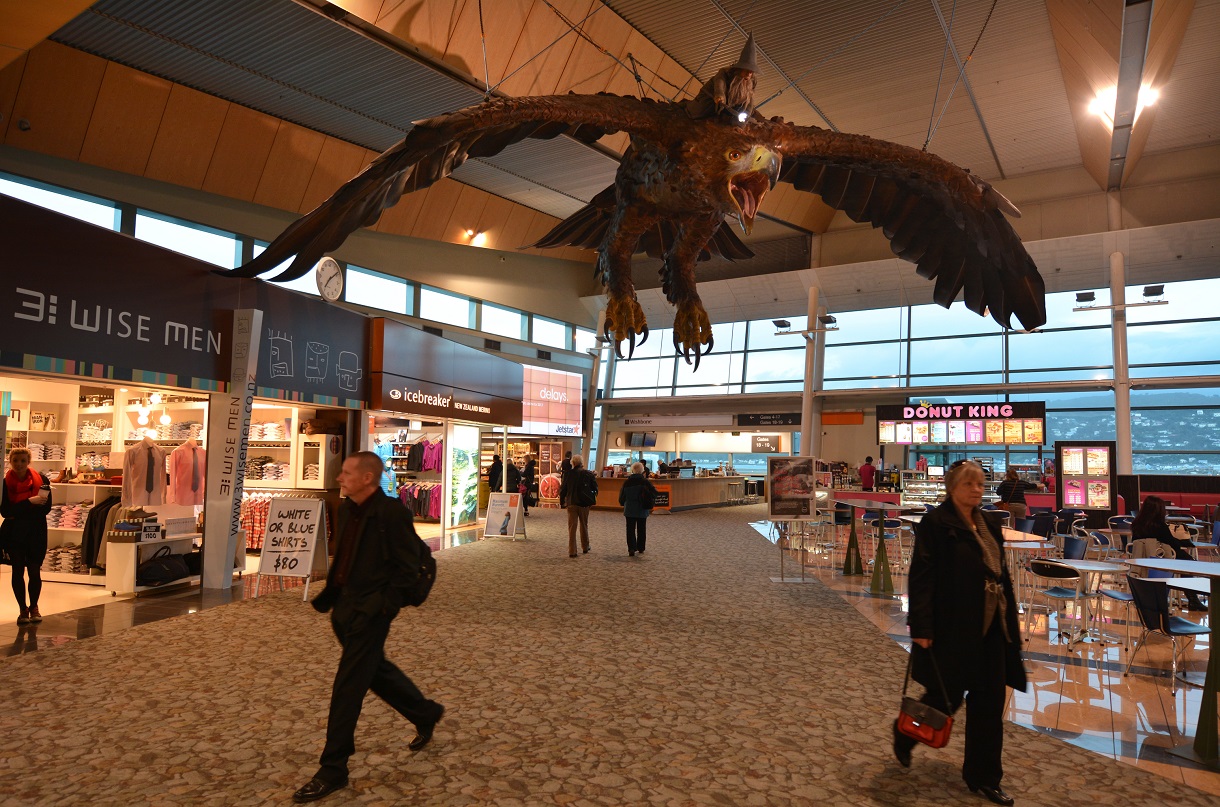
Drawing inspiration from the legends and mythical creatures of the bay waters, Boyes designed this airport, also known as “The Rock”. Its exterior resembles a rugged rock formation, while its interior is adorned with striking figures that hang overhead, captivating visitors from the moment they set foot in the country. This unique design ensures that Wellington Airport leaves a lasting impression on all who visit.
- Built-in: 1959
- Just so you know: Wellington Airport is one of the windiest airports due to the mountains that surround it, which is why its flights often fall into turbulence.
Beijing Airport, China
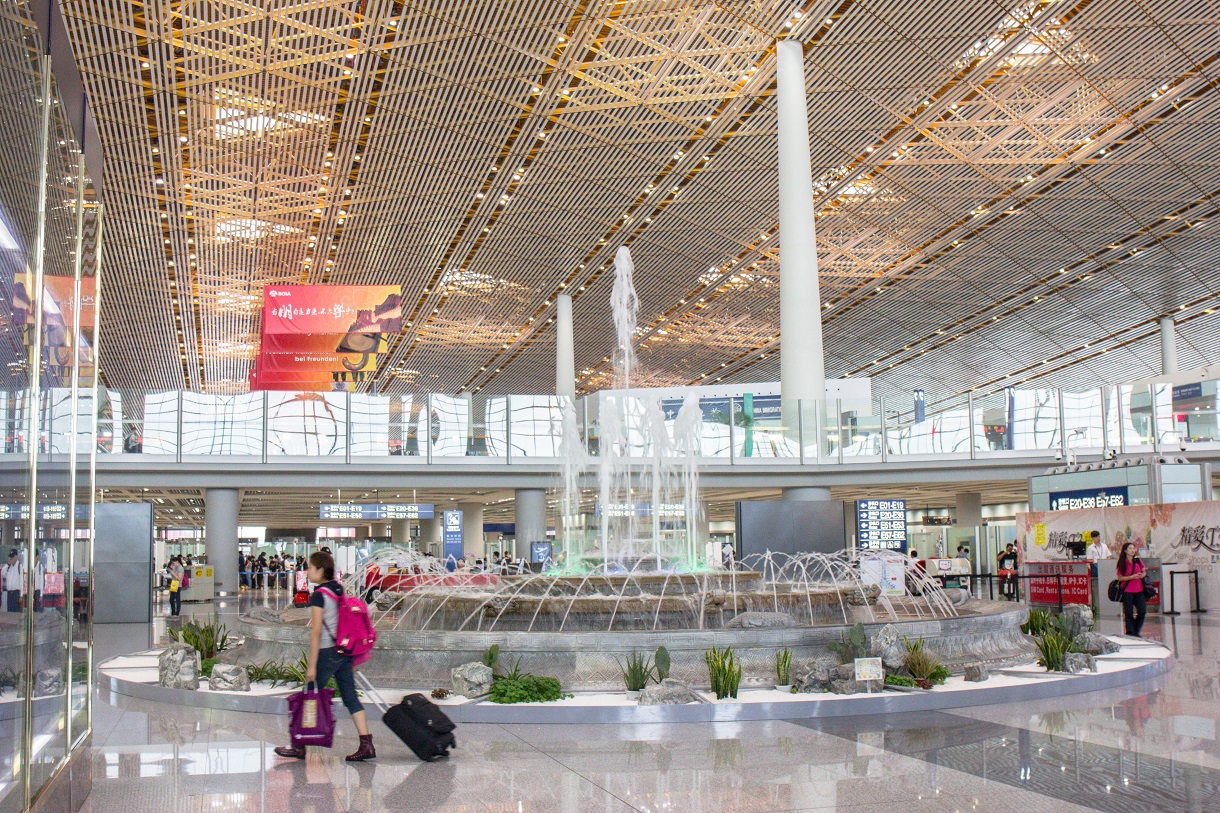
Beijing’s international airport is a remarkable structure, with its third runway making its debut during the city’s 2008 Olympic Games. The airport’s ambiance is characterized by the country’s most beloved colors, yellow and red, and it houses sculptures of dragons, the most renowned mythical beings of Chinese lore.
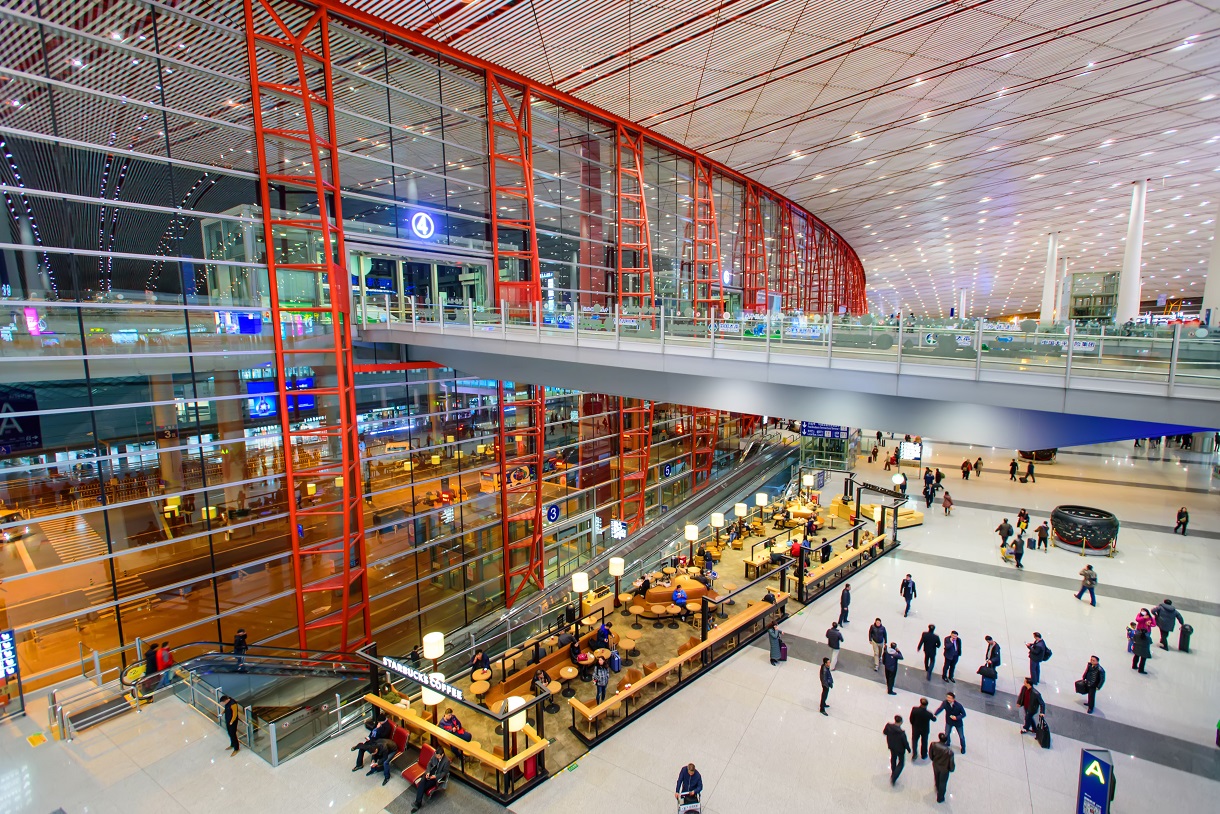
The airport is awash with natural light along its entire length, providing a breathtaking view for each of the nearly fifty million visitors it welcomes annually. Bright red columns embellish both the exterior and interior of its expansive area of over one million square meters, evoking the feel of a traditional temple, another iconic aspect of Chinese culture that travelers encounter when visiting this renowned location.
- Built-in: 1958
- Just so you know: Beijing Capital Airport hopes to become the busiest in the world by 2040.
Incheon Intl Airport, South Korea
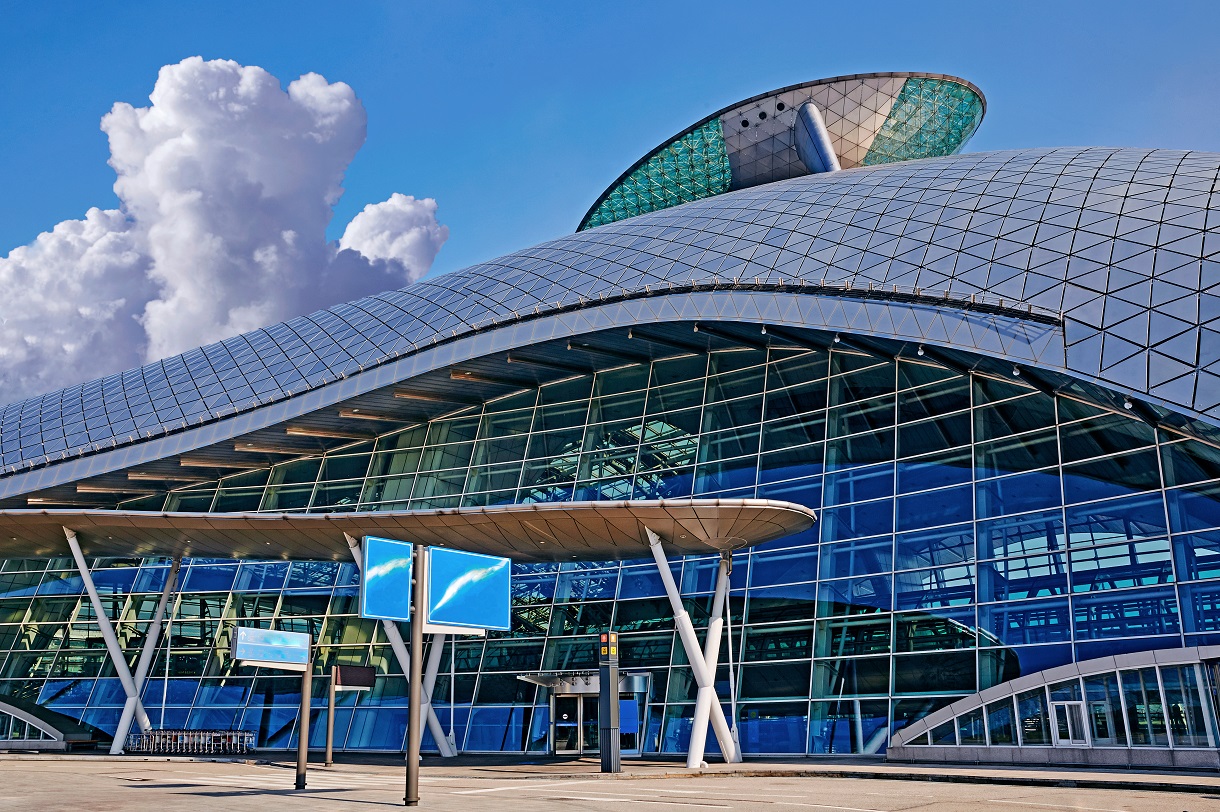
Incheon Airport in South Korea shares a strong bond with Denver, Colorado’s airport. Both iconic structures were designed by the renowned architect Curtis Fentress. After immersing himself in Korean culture, traversing the country, and studying the architecture of archaeological sites and traditional temples, he designed a modern airport that still deeply reflects the local culture.
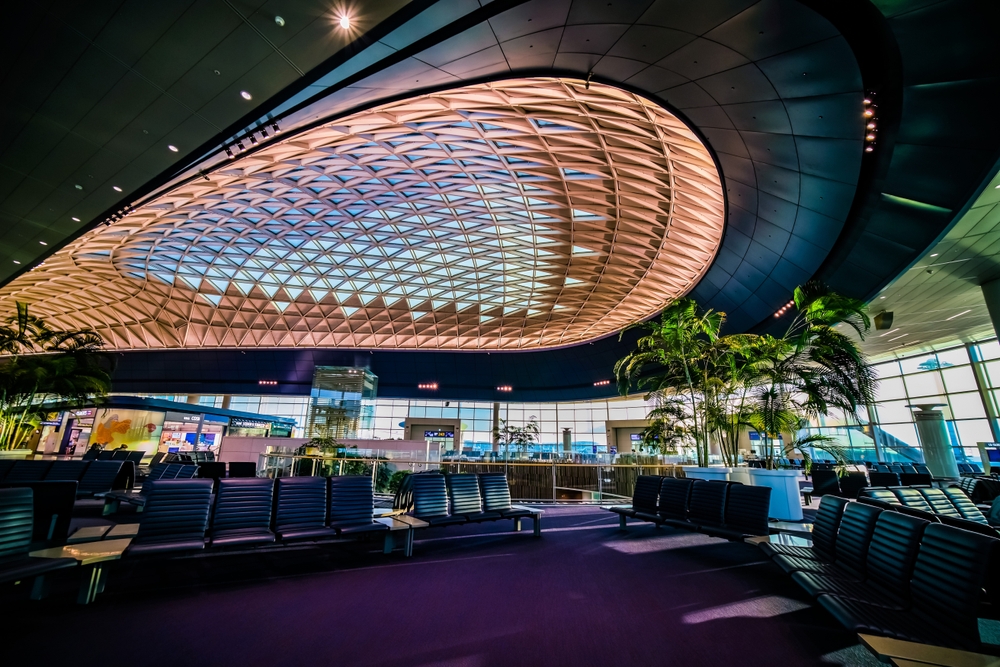
Constructed on a man-made island a short distance from the capital city of Seoul, it rightfully ranks among the world’s most impressive airports. Within its unique environment, you’ll find entertainment facilities such as an ice rink and casino, as well as a variety of relaxation spots to unwind before your journey, including a spa with sauna services and private rooms for a quick nap.
- Built-in: 2001
- Just so you know: Incheon Airport was awarded in 2021 by Skytrax as the best security airport in the world.





